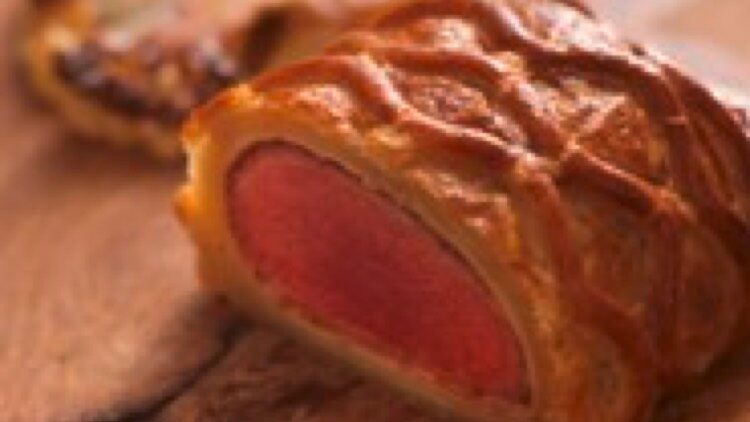
Valentine’s Day is an occasion unique to every person, couple, and family. At my house, I like to plan a meal that is sophisticated, seasonal and hearty (pardon the pun). This year, I’m preparing a beautiful Venison Wellington with a Red Wine Sauce. For a touch of decadence, I’m serving it with croûtes topped with spoonfuls of chicken liver and foie gras parfait. The richness of the parfait with the caramelised cauliflower marries perfectly with the gamey venison. For dessert, I’m serving up a bit of a twist on a classic; ‘Quince and Almond Crumble for Two’. I find these dishes to be the perfect blend of elegant and comforting—two of the most important ingredients on my dinner table for special occasions.
Adam Byatt Venison Wellington recipe
Adam Byatt Red Wine Sauce recipe
Adam Byatt Chicken Liver and Foie Gras Parfait recipe
For the Croûtes, slice a French baguette into 12 pieces and toast evenly on both sides
Ingredient of the Month
February’s ingredient of the month is one of my all-time favourite fruits: the quince.
Visually, their shape is best described somewhere between an apple and a pear, with yellow-golden skin. The bitter nature of their flesh and their pectin properties make quince an unlikely and somewhat unpleasant fruit to be eaten raw. More often, quince is cooked down, where deeper flavours develop and its flesh turns a pale-pink.
The Quince originated in the foothills of the Caucasus Mountains, stretching as far as Iran, but they have proven to be an incredibly accommodating species, having naturalised in Europe during the 13th century. Their cultural significance is widespread and spanning centuries; in the Balkans, a quince tree is planted when a baby is born as a symbol of love and fertility, while over here in England, Edward I is said to have planted 4 quince trees outside of the Tower of London way back in 1275. Historically speaking, the Quince is also one of the most controversial fruits, as some ancient texts suggest that Eve’s fruit of temptation might have actually been a quince…
A lot of people tend to connote quince with jellies and pastes that are so often seen on cheeseboards. While I enjoy the classic combination of quince and cheese, I enjoy foraging for more adventurous flavour profiles within my dishes that will more adequately highlight this complex and versatile fruit.
Adam Byatt Quince Crumble recipe
Adam Byatt
